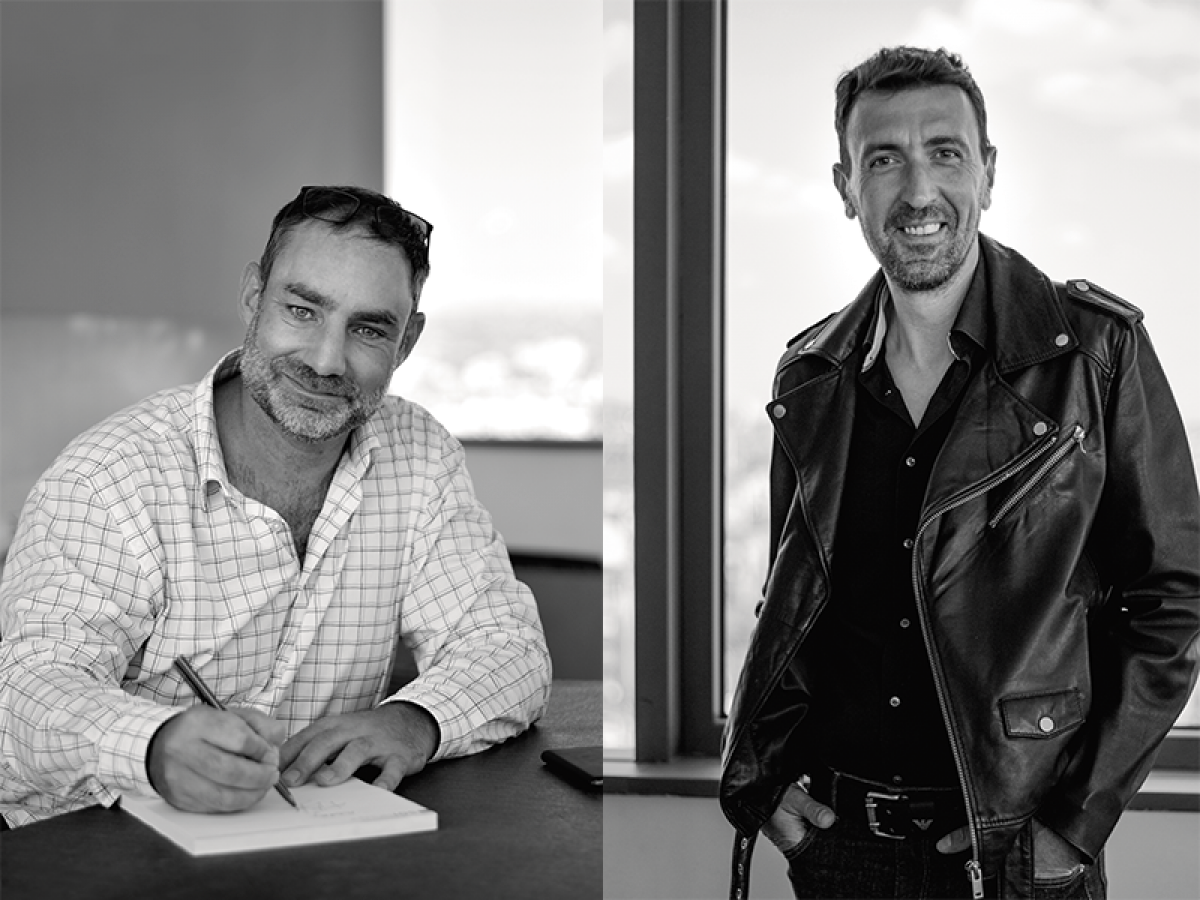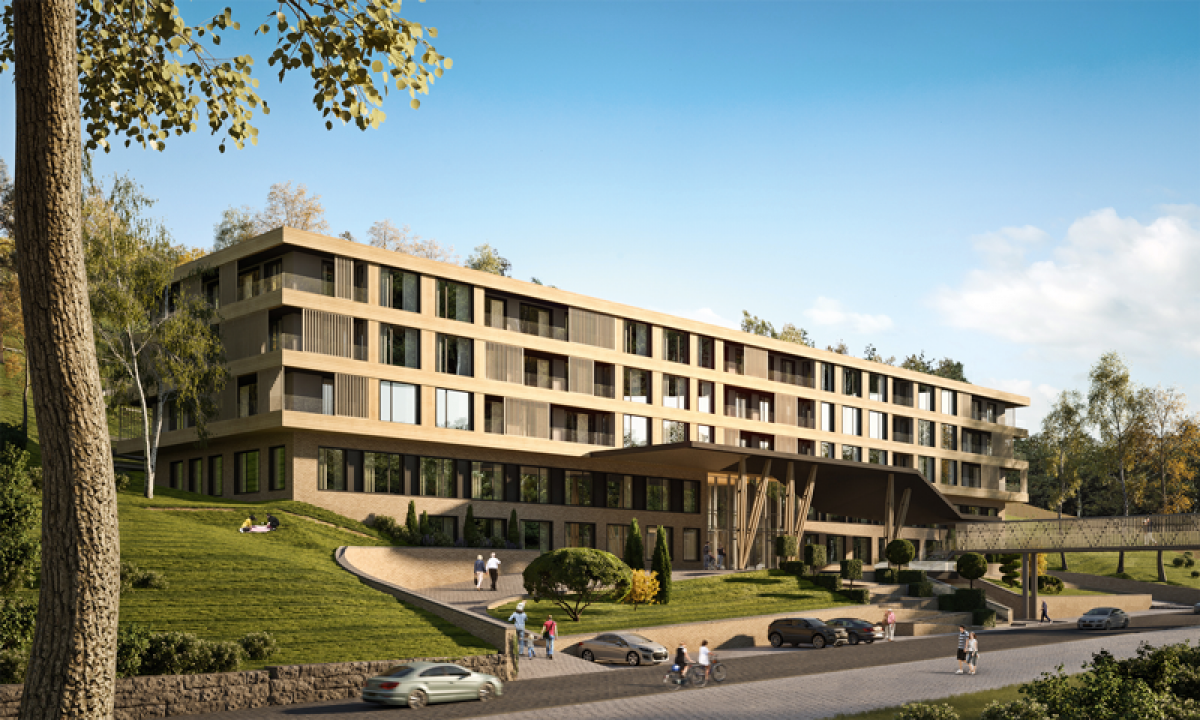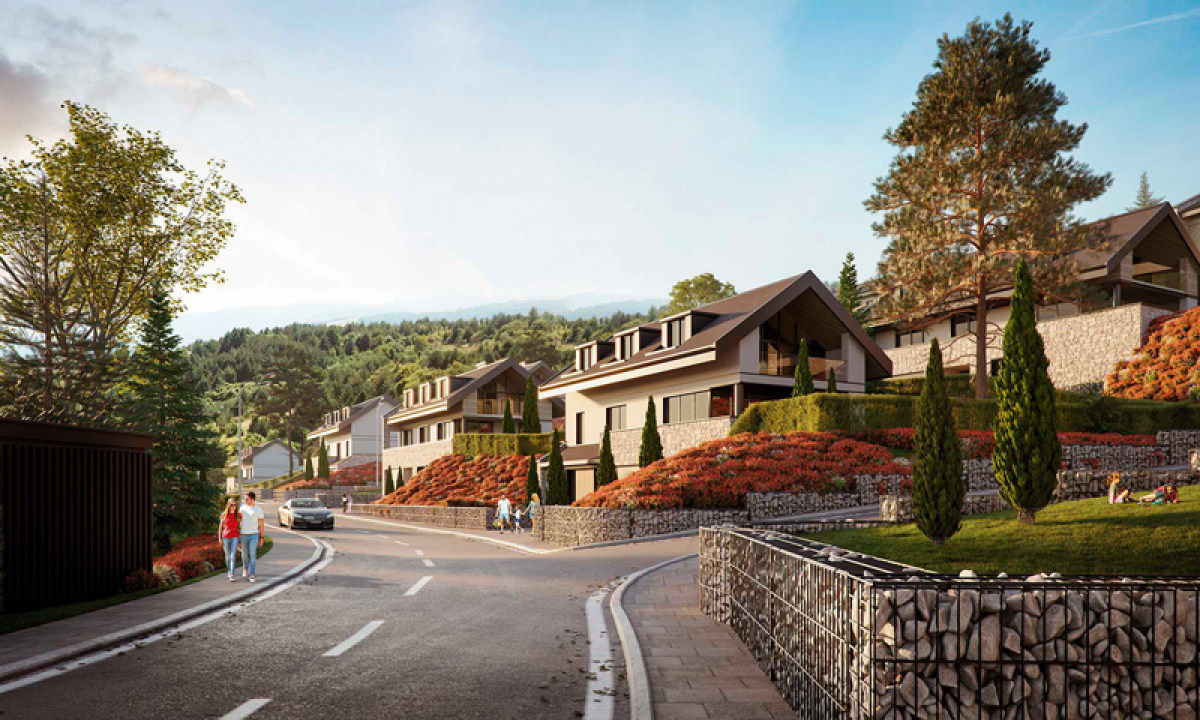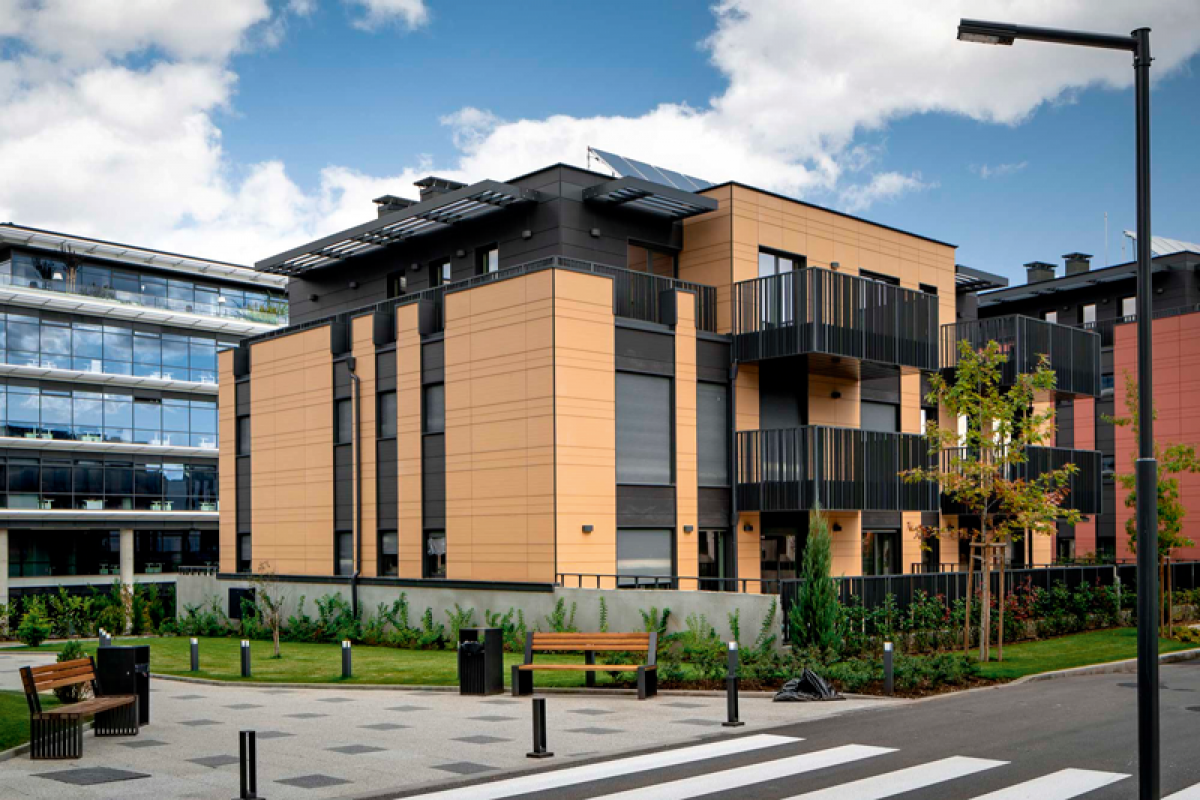





In a sense, Sofia is a paradise for architectural ideas, as there are limited restrictions or control over the quality and consistency of design solutions compared to other European cities. The result is buildings that may lack architectural context. Take, for example, a typical 3,000-square-meter residential building in Manastirski Livadi. It responds to itself with minimal attention to the impact on the wider picture of the surrounding cityscape. Thus, in the end, there is no specific style or context to respond to. This phenomenon is not new for Sofia. Here is Maria Louisa Boulevard with its 16th-century mosque and 19th-century central market, 20th-century apartments and façade shops marked from the 1990s, a mature example of how a casual approach to architectural design formulates a sense of unclear identity.
When we do large-scale housing projects, we still use context, although they are largely stand-alone. Sometimes we use historical precedents and always take into account the location and the environment to create a suitable architectural language. A major challenge facing and facing Sofia is restricting access to parts of the city. This is due to the increasing number of closed communities, which occupy large areas and, although serving their residents well, are becoming social islands that restrict public access and could initiate social problems in the future. The solution to this looming problem is to challenge investors and designers to provide safe environments that are always the easiest to integrate, but this has a negative impact on a city's long-term viability. Public spaces are the lifeblood of any functioning community and this can be seen in the parks in the city center. Ultimately, this is an issue that needs to be addressed through planning law. On the positive side, there is a noticeable deviation from the "buy land, design three houses and copy them on the ground" approach. A deeper understanding of the field shows that long-term values come from creating sustainable social environments that maintain or increase their value over time.
The pandemic has certainly drawn people's attention to the housing market, which gives them access to a higher quality of life. We currently have more projects in Bistrita and Pancharevo than anywhere else, which is a reflection of people's desire for clean air, a more organic and sustainable lifestyle with easy access to the city center. Apartment projects now require access to at least one outdoor space where the family can eat together, for example. As far as sustainability is concerned, I think there is some increase in interest, but there is still a long way to go in terms of what real sustainability means. The social, economic and environmental aspects of each project must take into account its impact on the environment. 50% of the world's carbon emissions come from the construction and operation of buildings, so we must be prepared for change, which would be very exciting. A tsunami of legislative measures is expected to change not only the way we design and build, but also the way we live. Builders who accept this now will have an advantage in the future. As far as office space is concerned, we are seeing small changes in distance and noise, but nothing that can be called revolutionary. Yes, the hot desk principle has become more popular, and yes, companies are appreciating the impact of the pandemic on future space requirements, but we designers still use the same tools we have always had to find successful solutions.
In homes yes. We certainly see a little less gold wallpaper. The change is not drastic, but it is moving towards the understanding that space and clean air are more valuable goods. In building B52, for example, designed by arch. Atanas Panov on Budapest Street, apartments with an air and water purification system are offered. There, the properties reach a selling price well above the regional average thanks to the implementation of these new technologies. This is an example of sustainability, which is beginning to determine luxury.
It's hard to say. I don't think the buildings themselves change the taste that much unless they are really innovative. In Bulgaria, buildings tend to follow trends instead of creating them. Residential Park and Garitage Park are perhaps the only examples where projects have made a significant difference in the market and changed expectations in the way people would like to live.
Durability is a parameter that SGI always strives to achieve, no matter what the project. I mentioned earlier that the idea that every building should increase in value and be a real investment is a key part of any brief. It is important that each master plan creates a sense of place. The term placemaking, or literally translated "creation of space", is used in the world of architecture, but means the creation of a socially and economically sustainable environment. New projects, especially development plans, must always be in line with the wider context of the environment and add benefits to the city - then we would call them long-term and even transactional. Another aspect of placemaking is the quality of the layout and the design itself. Access to public transport links, waste management, or access to public services are key indicators of good comfort. The idea of copying types of houses as soldiers across the field is not spatial planning. Aesthetically, each view of the individual properties in a gated complex must be different in order to be able to know where one is within the complex and to avoid the feeling of disorientation. Shared social areas, as well as easy access for pedestrians inside and off-site facilities, are ways to limit income segregation by delicately creating a sense of inclusion. The right reaction of the environment through the right technical solutions and the selection of materials is absolutely key to the creation of buildings that age gracefully. Three hundred years ago, Revival-style houses in this region were built to suit both the climate and the environment. Sloping roofs, overhanging eaves, stone base with wooden side ties and wooden frame on the first floor. This does not mean that we should copy the previous one, but we should pay attention. We see expensive houses with flat roofs, without protection from snow or sun, as if they were built on a golf course in Spain. We see facade materials with five-year warranties, with decorative elements, whose orientation collects dirt. This does not make the house a good long-term investment. Facades must be able to be maintained, buildings must be designed in such a way that the impact of the elements on the environment is mitigated. The development plan of our project The Vale is a very good example of illustrating these principles in action. It really has a sense of place and the buildings are specially designed to be maintained and aged in a way that will improve their aesthetic qualities